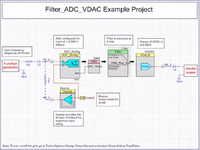Javert
Member level 2
Sorry for the beginner question, this is my first step with digital filters. I want to try to apply a digital filter to the signal sampled by the ADC in the STM32 MCU..I used Filter Designer from Matlab to design the filter.
I expected FD to be able to generate c code directly, similar to what Nuhertz's FilterSolution does. FD, but only generates .h with constants for the filter.
I'm a little confused about this Can anyone find an example of filter design in FD matlab for MCU?
Thanks
I expected FD to be able to generate c code directly, similar to what Nuhertz's FilterSolution does. FD, but only generates .h with constants for the filter.
I'm a little confused about this Can anyone find an example of filter design in FD matlab for MCU?
Thanks
